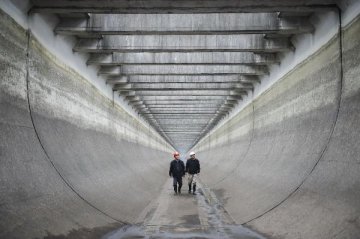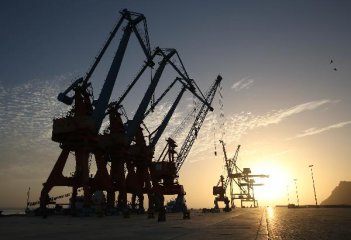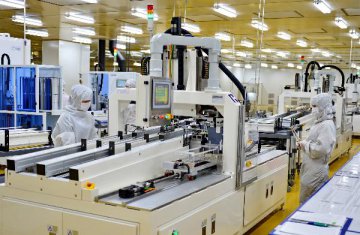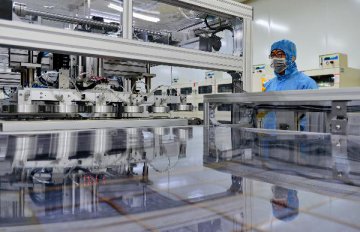
China’s central and local governments are introducing a serious of measures to promote the transformation and upgrading of the manufacturing sector. The Economic Information Daily reporter learnt that the central government said that China will advance the “Made in China 2025” initiative, carry out pilot projects of the “Made in China 2025” initiative in cities and promote the transformation of research and development, production, management, service model in the manufacturing sector to improve the quality and efficiency of manufacturing. In addition, the Ministry of Industry and Information Technology and other relevant and other relevant departments will formulate guidance for key technological transformation projects to guide the investment of social capital, resources and other factors, support enterprises in technological transformation via industrial investment fund and improve the usage efficiency of the country’s technological transformation funds in various areas.
A number of experts pointed out that the key for China's economy to achieve upgrading and new industrialization is to improve manufacturing quality and upgrade the industry. This is also an important content in the supply-side structural reform. The focus of the central government’s policy lies in improving manufacturing quality and upgrading the industry while taking the “Made in China 2025” initiative as a key driver and moving faster to replace old growth drivers with new ones to move to the medium-high level. Not long ago, the State Council held a symposium on transforming China to a manufacturing power and continuously promoting economic restructuring and upgrading to deploy related work.
In the process of promoting the transformation of the manufacturing sector, intelligent transformation, high-end equipment and key new materials will see a series of policy dividends. In addition to the central government’s policy support, local governments are also working to introduce more policies. For example, Guangdong Province has introduced a number of policies to reduce the cost of manufacturing enterprises and support the development of the real economy. It proposed that it will cultivate five emerging pillar industries, including high-end intelligent equipment, new energy and energy saving, new materials, new generation of information technology, bio-medicine.
At present, there is an obvious trend for the manufacturing industry moving to the medium-high level. Since the beginning of this year, technology-intensive and high value-added industries, such as high-tech industries, strategic emerging industries, have maintained double-digit growth rate. Latest data show that in July, the growth rate of the value added in the high-tech industry was 12.1 percent, and that of the equipment manufacturing industry was 10.7 percent, respectively 5.7 and 4.3 percentage points higher than that of industrial companies above the designated scale.
Many experts predicted that the high growth will continue in the future. “Among the secondary industry, the high-tech industries and high-end equipment manufacturing industry will continue to lead the entire industry. The trend will remain unchanged." Chen Yao, head of the division of the regional economics of the Institute of Industrial Economics of Chinese Academy of Social Sciences, said that the application of strategic emerging industries which sprang up as a result of cultivating new driver, particular intelligent manufacturing and artificial intelligence, has been increasing in traditional industries. For example, non-ferrous metal smelting has automated and integrated, which will become intelligent in the future. Thanks to this, the efficiency of resource deep processing industries will improve remarkably.
As a leading indicator of economic trends, the China Manufacturing Purchasing Managers' Index (PMI) has stood above 50 (a reading above 50 indicates expansion and one below it indicates contraction) for 13 consecutive months. Both the production index and new order index are continuously improving. In fact, the market is optimistic on the entire manufacturing industry. CITIC Securities chief economist Chu Jianfang that the expansion rate of capital spending in the manufacturing sector continued to come below the rate of demand expansion. It has been about 20 months that the manufacturing investment growth is lower than the nominal GDP growth. As China and the world’s demands are picking up, manufacturing investment will continue to rebound.
GF Securities macro analyst He Xiaoshu also said that manufacturing investment will restore in the coming years. Compared to policy-sensitive real estate investment, manufacturing investment is usually consistent with enterprises’ production cycle, and is closely related to enterprises’ continuing judgement of their future projects. This round of recovery in manufacturing investment has sustained for over nine months. Based on the recovery slope and time cycle, it is very likely to continue to recover in the future.
(Translated by Coral Zhong)
























Latest comments